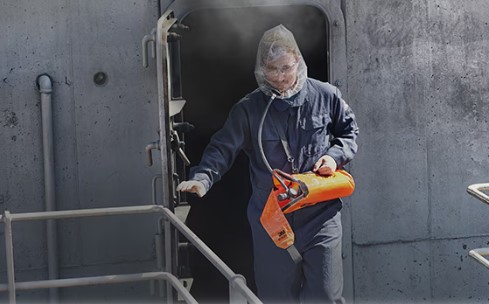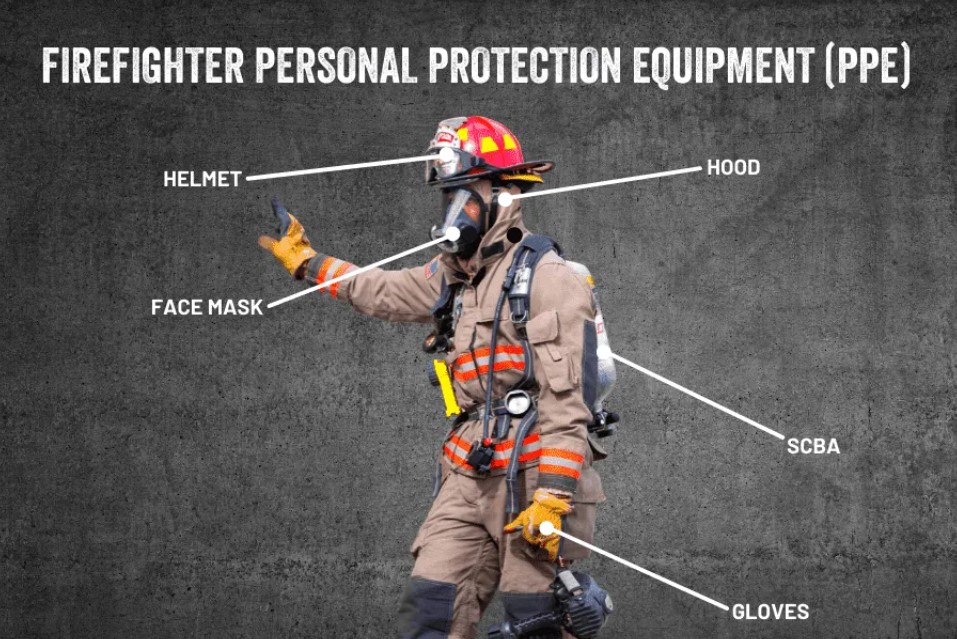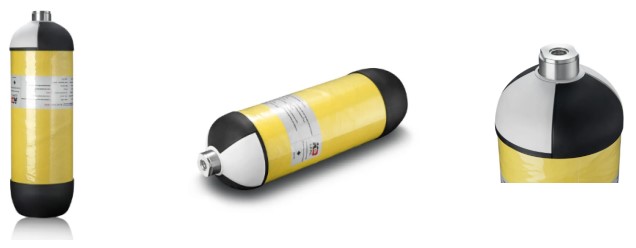When it comes to personal safety equipment in hazardous environments, two of the most critical devices are the Emergency Escape Breathing Device (EEBD) and the Self-Contained Breathing Apparatus (SCBA). While both are essential for providing breathable air in dangerous situations, they have unique purposes, designs, and applications, particularly in terms of duration, mobility, and structure. A key component in modern EEBDs and SCBAs is the carbon fiber composite cylinder, which provides advantages in durability, weight, and capacity. This article dives into the distinctions between EEBD and SCBA systems, with special emphasis on the role of carbon fiber cylinders in optimizing these devices for emergency and rescue scenarios.
What is an EEBD?
An Emergency Escape Breathing Device (EEBD) is a short-term, portable breathing apparatus specifically designed to help people escape from life-threatening situations such as smoke-filled rooms, hazardous gas leaks, or other confined spaces where breathable air is compromised. EEBDs are commonly used on ships, in industrial facilities, and in confined spaces where rapid evacuation may be required.
Key Characteristics of EEBDs:
- Purpose: EEBDs are designed solely for escape and not for rescue or fire-fighting operations. Their primary function is to provide a limited amount of breathable air to allow a person to evacuate a hazardous area.
- Duration: Typically, EEBDs provide breathable air for 10-15 minutes, which is sufficient for short-distance evacuations. They are not intended for prolonged use or complex rescues.
- Design: EEBDs are lightweight, compact, and generally easy to use. They often come with a simple face mask or hood and a small cylinder that supplies compressed air.
- Air Supply: The carbon fiber composite cylinder used in some EEBDs is often designed to deliver lower pressure air to maintain a compact size and weight. The focus is on portability rather than extended duration.
What is an SCBA?
A Self-Contained Breathing Apparatus (SCBA) is a more complex and durable breathing apparatus primarily used by firefighters, rescue teams, and industrial workers operating in hazardous environments for extended periods. SCBAs are designed to offer respiratory protection during rescue missions, firefighting, and situations requiring individuals to stay in a dangerous area for longer than a few minutes.
Key Characteristics of SCBAs:
- Purpose: SCBAs are built for active rescue and firefighting, allowing users to enter and operate within a hazardous environment for a significant period.
- Duration: SCBAs typically provide a longer duration of breathable air, ranging from 30 minutes to over an hour, depending on the cylinder size and air capacity.
- Design: An SCBA is more robust and features a secure face mask, a carbon fiber air cylinder, a pressure regulator, and sometimes a monitoring device to track air levels.
- Air Supply: The carbon fiber composite cylinder in an SCBA can sustain higher pressures, often around 3000 to 4500 psi, which allows for longer operational periods while remaining lightweight.
Carbon Fiber Composite Cylinders in EEBD and SCBA Systems
Both EEBDs and SCBAs benefit significantly from the use of carbon fiber composite cylinders, especially due to the need for lightweight and durable components.
The Role of Carbon Fiber Cylinders:
- Lightweight: Carbon fiber cylinders are much lighter than traditional steel cylinders, which is crucial for both EEBD and SCBA applications. For EEBDs, this means the device remains highly portable, while for SCBAs, it reduces the physical strain on users during prolonged use.
- High Strength: Carbon fiber is renowned for its durability and resistance to extreme conditions, making it suitable for the rugged environments in which SCBAs are used.
- Extended Capacity: Carbon fiber cylinders in SCBAs can hold high-pressure air, allowing these devices to maintain extended air supplies for longer missions. This feature is less critical in EEBDs, where short-term air provision is the primary goal, but it enables a smaller, lighter design for quick evacuation.
Comparison of EEBD and SCBA in Different Use Cases
| Feature | EEBD | SCBA |
|---|---|---|
| Purpose | Escape from hazardous environments | Rescue, firefighting, extended hazardous work |
| Duration of Use | Short-term (10-15 minutes) | Long-term (30+ minutes) |
| Design Focus | Lightweight, portable, easy to use | Durable, with air management systems |
| Carbon Fiber Cylinder | Low pressure, limited air volume | High pressure, large air volume |
| Typical Users | Workers, ship crew, confined space workers | Firefighters, industrial rescue teams |
Safety and Operational Differences
EEBDs are invaluable in emergencies where escape is the only priority. Their simple design allows people with minimal training to don the device and move to safety quickly. However, since they lack advanced air management and monitoring features, they are not suitable for complex tasks within dangerous zones. SCBAs, on the other hand, are designed for those who need to engage in tasks within these hazardous zones. The high-pressure carbon fiber cylinders in SCBAs ensure that users can safely and effectively perform rescues, fire suppression, and other critical operations without needing to evacuate quickly.
Choosing the Right Device: When to Use an EEBD or SCBA
The decision between EEBD and SCBA depends on the task, environment, and required duration of air supply.
- EEBDs are ideal for workplaces where immediate evacuation is necessary during emergencies, such as in confined spaces, ships, or facilities with potential gas leaks.
- SCBAs are essential for professional rescue teams, firefighters, and industrial workers who need to operate within hazardous environments for extended periods.
The Future of Carbon Fiber in Breathing Apparatus Design
As technology progresses, the use of carbon fiber composite cylinders is likely to expand, enhancing both EEBD and SCBA systems. The lightweight, high-strength properties of carbon fiber mean future breathing devices can become even more efficient, potentially offering longer air supplies in smaller, more portable units. This evolution would greatly benefit emergency responders, rescue workers, and industries where breathable air safety equipment is essential.
Conclusion
In summary, while both EEBDs and SCBAs serve as crucial life-saving tools in hazardous situations, they are designed with different functions, durations, and user needs in mind. The integration of carbon fiber composite cylinders has significantly advanced both devices, allowing for lighter weight and greater durability. For emergency evacuations, the portability of an EEBD with a carbon fiber cylinder is invaluable, while SCBAs with high-pressure carbon fiber cylinders provide essential support for longer, more complex rescue operations. Understanding the differences between these devices ensures they are used appropriately, maximizing safety and effectiveness in hazardous environments.
Post time: Nov-12-2024



